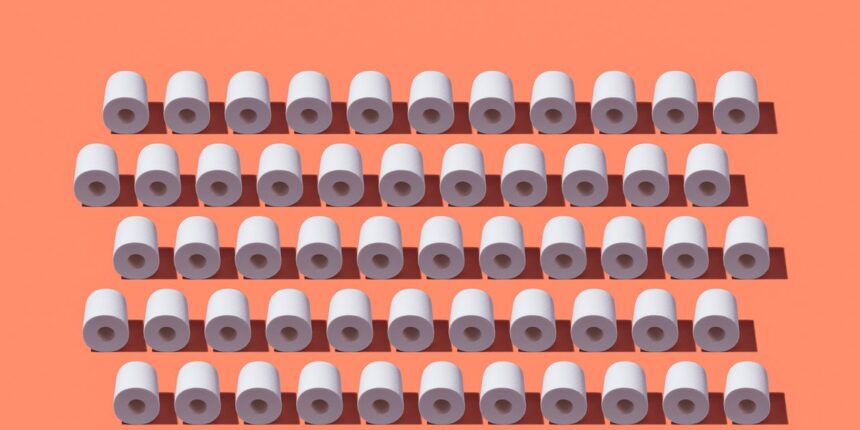Think of your poop like a sponge. Diarrhea is like a really oversaturated, filled-to-the-brim one. “Adding soluble fiber to a wet ‘sponge’ leads to absorption of the water, bulking and adding texture,” Dr. Brenner says. When some of the water is sucked out of the stool, your poop becomes firmer and thicker, which helps it slow down through your system.
Left to its own devices, runny stool can blast through your large bowel in just an hour or two. Formed poop, on the other hand, takes longer to enter and exit—say, closer to a day—which can put the brakes on your toilet trips.
Okay, so that’s how fiber helps with diarrhea. But what if you’re dealing with the opposite—constipation, in which there’s not enough moisture to move things along. The same analogy works here too. When you’re constipated, your poop is like a hard, dry sponge.
“Adding soluble fiber to a dry ‘sponge’ enlarges the surface area and weight of the sponge,” Dr. Brenner says. This allows your poop to draw in more water from your digestive tract, “softening the sponge,” he says. As a result, your poop now has enough moisture in it so the contractions of the muscles lining your gut can effectively propel it forward.
Either way, this type of fiber makes your stool heftier and easier to pass. It’s a bulking agent, whether it’s drawing water into something hard to soften it, or absorbing water when there’s too much, says Dr. Brenner.
“I always tell my patients, if things are too hard, it will soften them,” he says. “If they’re too loose and too watery, it’ll absorb the fluid and bulk them up.”
If you’re wondering how making poop bigger can help here, know that softness is key in constipation. The definition of it is stool that’s hard to release, usually resulting in three or fewer poops per week—the size of poop doesn’t really factor in there. In fact, some research suggests people with and without constipation have similarly sized poops when they do go. (It’s just that constipated people don’t go as often.)
While viscous soluble fiber comes in clutch for both constipation and diarrhea, that doesn’t mean other types of fiber are slouches in the bathroom department, either—they just have more specialized roles. For example, nonviscous soluble fibers, also known as fermentable fibers, don’t have the same water-absorbing effect as their viscous cousins. But when your gut bacteria break down those fermentable fibers, they create byproducts that can spur contractions in the muscles lining your gut. This helps stimulate bowel movements, making this type of soluble fiber a boon if you want to go more often.
Insoluble fibers, found in foods like wheat bran or corn, don’t absorb water either, but they can also aid constipation. These fibers mildly irritate your large bowel, triggering the release of water and mucus to move things along.
Here’s how to use this info to make your toilet trips a little smoother.
Even if everything gut-wise is going well, you probably still need to eat more fiber. After all, its benefits extend beyond your belly—it can help you protect your heart by reducing cholesterol and blood pressure, among other perks—and most people aren’t getting enough of it: About 90% of women don’t eat the recommended amount of 25 grams of fiber per day, per the US Dietary Guidelines.
Read the full article here



